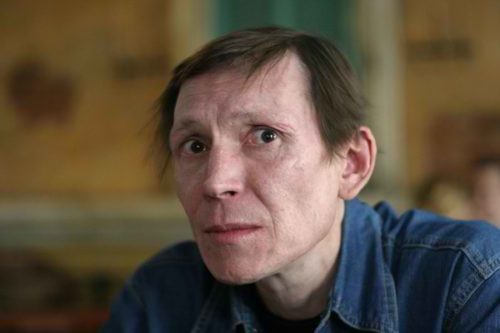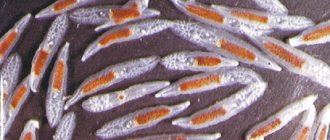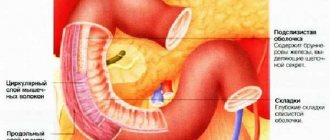From newspapers and magazines, from doctors and notes from various Internet resources, we often hear about the dangers of pancreatic inflammation: there are many cases where the disease was fatal and claimed the lives of many ordinary people, but today we will talk about celebrities who died from pancreatitis . Unfortunately, recently the pathology has been manifesting itself more and more often, and if earlier this disease was diagnosed mainly in people after 40 years, now this mark has dropped to 30. Why is this trend observed and which famous personalities have become victims of this aggressive disease - We'll find out further.
What is pancreatitis?
The pancreas is one of the most important organs, without the normal functioning of which natural human life is impossible. Its main functions are the production of certain hormones (for example, insulin, glucagon, somatostatin), as well as enzymes necessary for the breakdown of food.
Abuse of alcohol, unhealthy foods, and overeating become prerequisites for the development of an inflammatory process in the organ. As a result of this, the pancreas swells greatly, and its pancreatic juice loses the ability to be freely transported to the duodenum to begin work on digesting the food bolus. Lingering in the pancreas for a long time, fermentation is activated and begins to digest the pancreas itself, that is, the process of self-digestion is launched, which causes serious disruptions in the body and severe symptoms in the patient. There is a disruption in the digestive process and absorption of nutrients, in addition, general intoxication occurs, which negatively affects a person’s well-being.
It is these phenomena that characterize a disease such as pancreatitis. In medicine, this term is usually understood as the inflammatory process of the pancreas, in which the organ is destroyed under the influence of its own enzymes.
In addition to neglecting the principles of healthy eating, other circumstances can lead to such a development of events:
- Various pathologies of the gallbladder, biliary tract or liver;
- Gastritis, ulcerative lesions of the stomach or small intestine;
- Mechanical damage to the abdominal organs due to surgical operations or injuries;
- Diseases of infectious or viral etiology: mycoplasmosis, hepatitis, mumps, purulent-inflammatory processes, chronic tonsillitis, chronic liver failure, intestinal sepsis, chicken pox, dysentery;
- Unjustified or long-term use of certain medications: estrogens, glucocorticosteroids, antibiotics, diuretics;
- Diabetes mellitus and atherosclerosis;
- Poisoning by toxic household or industrial substances (acids or alkalis), chemical intoxication, helminthic infestations;
- Obesity;
- Congenital pathologies, in particular, narrowing of the ducts;
- The period of pregnancy, during which the uterus exerts significant pressure on the vessels, which may well provoke the development of inflammation of the pancreas;
- Imbalance of hormones, as well as any endocrine pathologies;
- Genetic predisposition, in which pancreatitis can occur even in infants;
- Malignant tumors.
You can guess that the pancreas is out of order by symptoms such as nausea, vomiting, flatulence and diarrhea. But the most important symptom is acute girdling pain in the abdominal area, which is most often localized in the left hypochondrium. In the most severe and advanced cases, the pain is so strong and unbearable that the patient has to be administered narcotic drugs. However, this is not why the diagnosis of pancreatitis is scary - the main danger is that the disease can be fatal.
Consequences after pancreatic necrosis: prognosis for recovery and chances of survival
If pancreatic necrosis develops, there is a chance to survive, but the outcome depends on many factors: age, severity of the condition, area of damage, concomitant diseases, timing of treatment.
Given the high mortality rates from pancreatic necrosis, the efforts of modern medicine are aimed at finding effective treatment methods that can increase the likelihood of recovery and give the patient the opportunity to live after suffering a serious illness.
Is pancreatic necrosis a disability for the rest of your life?
If tissue death of a significant part of the gland occurs (total or subtotal process), the patient rarely survives, despite timely and adequate assistance.
Cell death occurs at lightning speed: sometimes the organ dies within a few hours.
Even if a timely operation is performed, it is not always possible to achieve a positive result, and the chance to save life is reduced to zero.
Often pancreatic necrosis is so severe that complete recovery does not occur. The destruction process involves the head, body and tail of the organ. The most optimistic prognosis after surgery is survival, which leads to disability. In this case, the person is significantly limited in his ability to work.
Contraindications after pancreatic necrosis include:
- psycho-emotional stress,
- hard physical labor,
- activities that require eating disorders,
- activity in contact with hepato- or pancreatic poisons.
All of the above conditions are strictly prohibited after pancreatic necrosis, since they can lead to the development of a second relapse with a fatal outcome.
Organ complications of pancreatic necrosis
Necrosis of pancreatic tissue without immediate emergency assistance leads to the release of a large number of enzymes into the vessels, causing them to dilate.
Due to increased permeability of the walls, enzymes enter the intercellular spaces.
The gland swells, hemorrhages appear in its tissues and retroperitoneal tissue, which leads to irreversible processes, among which the earliest and most common are:
- infiltrate,
- hemorrhagic effusion,
- peritonitis,
- retroperitoneal abscess or phlegmon.
Infiltrate
The development of parapancreatic infiltrate occurs not only in the gland, but also in neighboring organs. Affected:
- duodenum,
- stomach,
- spleen.
The process can spread to the gallbladder, liver, and cause changes in the lower intestines.
They are soldered together with the participation of exudate, filling the upper part of the abdominal cavity or its entire space.
The formation of an infiltrate is a reaction of the body’s immune system to necrotic tissue of the gland. The process itself is aseptic at this stage, there is no infection. Therefore it is possible:
- reverse development - resorption,
- formation of cysts,
- purulent option.
If the infiltrate does not disappear within 3 months, cysts appear. This is a warning of a possible serious complication.
The addition of infection leads to:
- to purulent lesions of the pancreas,
- peritonitis,
- abscess,
- phlegmon.
This significantly worsens the condition and prognosis of the disease.
It is difficult to differentiate parapancreatic infiltrate and make a diagnosis without additional research methods. This is due to scant clinical manifestations due to the aseptic nature of the process:
- the general condition is not disturbed, the patient has no complaints,
- the temperature is normal, only sometimes there is a low-grade fever - an increase to 37–37.9 degrees Celsius,
- There are no changes in the general blood test, except for a neutrophilic shift to the left (not always).
A complication can be suspected by performing an ultrasound of the retroperitoneal space, blood and urine tests for the content of pancreatic enzymes: biochemical tests determine an increased level of amylase, and ultrasound examination reveals characteristic changes.
Peritonitis
Peritonitis is an inflammation of the serous layer of the abdominal cavity, leading to the accumulation of fluid with a high content of enzymes. The frequency of this complication is 60–70%. It manifests itself as a vivid clinical picture of an acute abdomen. Appears:
- paroxysmal pain of high intensity, without clearly defined localization, sometimes detected in the left hypochondrium and epigastrium,
- signs of an acute abdomen: tension in the anterior abdominal wall and all positive symptoms of inflammation,
- severe intoxication: fever up to 40 and above, tachycardia, drop in blood pressure, nausea, vomiting, flatulence,
- psychosis,
- collapse - a sharp decrease in blood pressure and a drop in cardiac activity.
In the analyses:
- complete blood count – leukocytosis and high ESR,
- biochemical - diastasis of urine and blood exceeds the norm.
Hemorrhagic effusion
Peritoneal hemorrhagic effusion is one of the causes of death from pancreatic necrosis. It is the most severe complication. Highly active enzymes lead to the progression of necrosis and massive cell death.
Massive bleeding occurs, the tissues of the organ become saturated with blood. Neighboring organs are involved in the process, infection occurs, and purulent intoxication develops.
The disease progresses rapidly and urgent resuscitation is required.
Clinically, this resembles an acute abdomen, but all its signs are expressed to the maximum. Suddenly develops:
- hyperthermia - temperature reaches 41–42 degrees Celsius,
- severe chills and loss of consciousness,
- lethargy or agitation
- rapid heartbeat, blood pressure instability,
- dyspnea,
- dagger pain - intense unbearable attacks of acute pain in the abdomen, mainly in the left hypochondrium,
- nausea, repeated vomiting,
- diarrhea and flatulence.
Phlegmon
Retroperitoneal phlegmon is an inflammation of fatty tissue without clear boundaries that occurs acutely. Pathogenic microflora penetrates through the blood or lymph into the tissue from a purulent source of infection or during surgery. Clinical symptoms suggest the development of a complication:
- febrile temperature (38–38.5 degrees Celsius and above),
- pain in the lumbar region - pulsating or pulling in nature with irradiation into the abdominal cavity when other organs are involved in the pathological process,
- increased pain when moving or changing body position.
In addition to the listed organ lesions of pancreatic necrosis, the following often develop:
- fistulas,
- deep vein thrombosis with dysfunction of the pelvic organs,
- strictures of the hepatobiliary zone,
- gastrointestinal bleeding,
- stomach and intestinal ulcers,
- enzyme deficiency.
Are there any chances of surviving the disease?
To survive pancreatic necrosis, emergency hospitalization in the surgical department is necessary.
The painful process of cell death occurs rapidly, can be lightning fast and be completed within one to two hours. If necrosis has become total, death occurs in 100% of cases.
To interrupt the vicious pathological circle, urgent resuscitation measures and surgery are needed. In this case, life can be saved.
Initially, the patient is admitted to the intensive care unit, where all emergency treatment measures are carried out to bring the patient out of shock. Detoxification and pain relief are carried out, and complete functional rest is created for the pancreas. Approximately on the 5th day, when the boundaries and extent of organ damage become clear, necrectomy is performed.
But this does not always happen in such a time frame. If the lesion is total and the clock is ticking, the operation is performed immediately, sometimes the pancreas is completely removed - pancreatotomy. The patient must be secured for further manipulations to flush the installed drainage systems, and he may remain in this position for a long time.
The duration of treatment after surgery is long, taking more than six months or a year. It is mandatory to follow the prescribed diet - table No. 5 according to Pevzner. In the future, under the supervision of a gastroenterologist, it can be changed to table No. 1 and its modifications. Only a specialist can determine how long you need to be on a strict diet.
In addition to the diet, enzyme preparations that have a good review of the treatment of pancreatitis are prescribed, as well as a number of medications that are necessary for good health. All instructions must be strictly followed - this is the only way to improve the quality of life after surgery.
Mortality statistics for pancreatic necrosis
Statistics show that death with the onset of necrosis occurs in 40–70% of cases. Causes:
- late visit to the doctor,
- extensive area of organ damage,
- addition of infection,
- the number of complications that have developed (more than three).
The final diagnosis in such cases is made by a pathologist, and not by a gastroenterologist or surgeon.
With pancreatic necrosis (PN), the mortality rate is high (with a total process - up to 100%), and no downward trend is observed. In 97% of severe PN, mortality in patients is due to complications, including postoperative complications. The necrotic process itself can often regress, but complications develop rapidly and lead to devastating consequences.
Mortality statistics for PN are depressing: out of 10 patients, from 2 to 9 die in the hospital or from severe complications or new diseases after discharge. The numbers are even more scary considering that people of working age – from 30 to 50 years – fall ill with PN.
After pancreatic necrosis, the patient’s ability to work is limited or completely lost. In the future, surgical intervention may be required again due to the development of complications during PN or those that arose during the main operation.
Causes of death due to pathology
Mortality with PN reaches 70%, the prognosis is rarely favorable. According to statistics, more than half of patients die on the operating table during emergency surgical treatment. The risk of death depends on the timing of seeking specialized medical care. Play a role:
- old age (after 50 years),
- hypotension,
- diabetes,
- blood urea exceeding the norm,
- metabolic acidosis,
- leukocytosis.
According to numerous studies, the main causes of death include:
- early manifestations of toxemia,
- long-term septic complication.
Due to their development, every fourth patient experiences multiple organ failure. The cause of death in the late stages is infectious-toxic shock.
Important factors are also:
- Excessive duration of alcohol intake is typical for male patients,
- violation of diet and excessive consumption of fatty, spicy and fried foods,
- cholelithiasis - more often develops in women if the patient does not adhere to the recommendations for therapeutic nutrition,
- constant stressful situations.
Rehabilitation period after surgery
After surgical treatment, patients face problems associated with emerging postoperative complications, and not with the ongoing symptoms of pancreatic necrosis. During this period, supervision of a surgeon, endocrinologist, and rehabilitation specialist is necessary.
After suffering severe pancreatic necrosis, in 70% of cases, patients remain in a rehabilitation center or intensive care unit under the supervision of doctors for a long time - up to one year.
Since a gentle regimen and complete rest are prescribed, the patient remains on bed rest. Over time, this leads to muscle atrophy and the development of flexion contracture of the legs. Moreover, weak muscles cannot support the weight of the person’s body.
To avoid this, it is recommended to massage and perform a set of special exercises to strengthen muscles.
Due to autolysis (self-digestion of the gland during the acute period), digestion is severely disrupted. The patient loses up to 50% of body weight. In the postoperative rehabilitation period, it is important to follow a therapeutic diet so as not to re-aggravate the process and restore weight. It is recommended to eat pureed food in small portions 6–8 times a day.
Strict adherence to the diet requires the exclusion of spicy, fatty, fried, pickled foods, alcohol, carbonated drinks, strong tea and coffee, and chocolate from the diet. The list of prohibitions is long, but every patient should know it so as not to break the diet.
If the patient follows a dietary diet, the patient returns to his previous life and does not experience pain or discomfort. Poor diet leads to death.
How to prevent the fatal consequences of pancreatitis?
Pancreatic necrosis after surgical and conservative treatment, if the person survives, is a disease whose course can be controlled. If there is a desire to live, then a person lives with such a diagnosis, following the recommendations, and there is no risk of death.
It is also necessary to monitor your emotional state, avoid stress, follow healthy eating rules, attend medical examinations and consult a doctor without self-medicating. Prevention of complications includes giving up bad habits: stopping drinking strong and low-alcohol drinks.
If these rules are followed, your health can remain satisfactory.

Source: https://DiabetSahar.ru/pankreatit/posledstviya-posle-pankreonekroza-prognoz-na-vyzdorovlenie-i-shansy-vyzhit.html
What leads to death in pancreatitis?
Such an unfavorable prognosis depends on many factors: the severity, pathogenesis, nature and type of the disease, as well as the severity of the symptoms that appear in the patient.
- Alcohol abuse. This circumstance is the cause of death of people at a young age, especially for men, since they are the ones most susceptible to alcohol dependence. The mechanism of this connection is quite simple. With the regular intake of ethanol into the body, intoxication of organs such as the pancreas and liver occurs, as a result of which their tissues are inevitably destroyed. As a consequence, necrosis occurs, that is, the death of those structures in which the lesions are localized. The combination of alcohol and fatty foods becomes a real rocket bomb, which is why the majority of attacks, including fatal ones, occur during the holidays.
- Acute pancreatitis is the most common cause of death. The pathology in its acute form is quite complex; the patient experiences severe symptoms of a pronounced nature: severe pain in the abdominal area, incessant vomiting, diarrhea, and physical exhaustion. The first week of an exacerbation is a rather difficult period for the patient, during which various kinds of complications can arise, for example, necrosis and internal bleeding, and against their background - death. It is noteworthy that this can happen even after a timely diagnosis and the start of proper treatment.
- Chronic pancreatitis. In itself, this form of the disease is not as dangerous as the acute phase. However, it is characterized by periods of remission, which sooner or later give way to exacerbations, accompanied by the same severe symptoms. In addition, in conditions of a sluggish ongoing inflammatory process, the risk of developing complicating factors increases significantly: it can be either a cyst or a malignant tumor.
In general, the onset of death is preceded by:
- Changes in the cellular structure of the pancreas with subsequent necrotic processes;
- The penetration of enzymes into the blood vessels located near the organ, which occurs due to the impossibility of the outflow of pancreatic juice into the duodenum and its forced search for an outlet - as a result, enzyme substances are carried throughout the circulatory system and the patient dies.
Sometimes such a destructive process only takes a few days or even hours to take a person’s life.
Pancreatitis statistics by causes
- The majority of patients hospitalized with acute pancreatitis are people who abuse alcohol. According to some data, over 40% of all patients are alcoholics with pancreatic necrosis or destructive pancreatitis.
- And only 30% of patients are being treated for concomitant gallstone disease.
- 20% of overweight people suffer from this disease.
- Viral hepatitis, injury, medication and poisoning as the causes of pancreatitis account for only 5%.
- Congenital defects, developmental anomalies, hereditary disposition account for no more than 5%.
Which celebrity died from pancreatic problems?
According to statistics, pancreatitis ends in death in 40% of the total number of cases. In other words, due to acute inflammation of the pancreas, 4 out of 10 people suffering from this disease die. In general, there are many pathologies of this organ that are fraught with the most unfavorable prognosis. These problems occur equally in both men and women and affect different segments of the population. Unfortunately, among famous personalities there are also people who have passed away due to this devastating disease.
Lyudmila Senchina

Soviet and Russian singer and actress, recognized as People's Artist of the Russian Federation and Honored Artist of Ukraine, was born on December 13, 1950 in Ukraine, in the Nikolaev region. Thanks to her father, the director of the village cultural center, Lyudmila first appeared on stage. At first these were amateur performances and festive performances, but after graduating from the Leningrad Music College, fame gradually began to come to her. At the same time, Senchina began acting in films; she rarely appeared in Soviet films, but always played the main roles. The actress gained particular popularity after the release of the film “Armed and Very Dangerous” in 1977; it was from that moment that a major turn came in Senchina’s biography. In the 80-90s, her popularity as a pop singer reached its apogee: her songs “Fragrant bunches of white acacia...”, “Pebbles”, “Love and separation”, “Wild flowers” were sung by the whole country.
Lyudmila Senchina was married 3 times. In her last interviews, she admitted that she regretted divorcing her first husband, with whom she had been married for 10 years. According to the singer herself, there was a period in her life when she was in a seriously depressed state. During this time, she began to rapidly gain weight, although a little later she quickly got into shape. Many of her fans are inclined to believe that it was these two factors: depression and the possible use of fat-burning drugs that served as a serious impetus for the development of a terrible disease - pancreatic cancer. The artist had a courageous character, she performed even when she was undergoing chemotherapy, and continued to make plans for her creative activity. Few people knew about Senchina’s diagnosis, and only those closest to her knew that she had been in a coma for the last week and a half before her death. On January 25, 2020, the actress died.
Oleg Yankovsky
A brilliant performer of a variety of roles, both comedic and heroic, and simply a charismatic personality, Oleg Yankovsky. Film director, theater, film and television actor of the USSR and Russia was born in the Kazakh SSR on February 23, 1944. He received his education at the Minsk Theater Institute, but began his career in Saratov. It was there that he worked for some time in the city theater, where he was taken at the request of his wife Lyudmila Zorina. At first, Yankovsky was in her shadow, however, in 1967 the situation changed dramatically: the artist was noticed by Vladimir Basov, a famous film director who at that time was filming the film “Shield and Sword” and was looking for an actor with a handsome and courageous image for the main role. Oleg Yankovsky met precisely these criteria. After the release of this film, its fame spread instantly. Further, other films followed: “I, Francis Skaryna”, “My affectionate and gentle beast”, “That same Munchausen”, “The Man Who Cried”, etc.
In the run-up to 2009, Yankovsky sought medical help, complaining of severe abdominal pain. By then he already looked very exhausted. Doctors discovered that he had a late-stage malignant tumor of the pancreas - it was then that it became clear that the actor would not be able to live long. For some time, Yankovsky was treated in Germany, but treatment even in such a country with fairly developed medicine did not bring a positive result, and a month later he returned to Moscow, having managed to play in his last performance. In April, Yankovsky became significantly worse: he suffered internal bleeding. Already on May 20, Oleg Ivanovich passed away - less than a year passed from diagnosis of the disease to death.
Svyatoslav Belza

Born on April 26, 1942 in the city of Chelyabinsk. His father devoted his entire life to musicology, so the boy grew up in this atmosphere from an early age and soon began to show interest not only in music, but also in world literature. He was especially interested in the work of William Shakespeare.
After graduating from the Faculty of Philology at Moscow University and going to work at the Gorky Institute of World Literature, Belz began writing for Literary Gazette - these were essays and reviews of the works of foreign authors, as well as works devoted to the topic of the influence of European culture on Russian literary creativity. He can rightfully be called the country's main Shakespeare scholar, however, he wrote his prefaces and afterwords not only for the works of this classic, but also for other, no less famous authors - Honore de Balzac, Charles Snow, Slawomir Mrozek, Edgar Poe, Jaroslav Iwaszkiewicz .
Since 1987, Belza began working on television, he hosted his own program “Music on Air”, together with Maria Maksakova he was the presenter of “Romance of a Romance”, working in tandem with Alla Sigalova, he hosted the programs “Bolshoi Ballet” and the Bolshoi Opera.” In the literary, musical and educational fields, Belza was awarded many prizes and awards.
There were no signs of trouble, but at the end of 2013 Svyatoslav Igorevich felt unwell and had abdominal pain. According to Belza himself, before this he was in excellent physical shape and had not been to the doctors for about 20 years. Busy days with work did not allow the literary scholar to seek help: a visit to specialists was constantly postponed. In the spring of 2014, Belza received a disappointing diagnosis - pancreatic cancer. In the first week of May, the presence of the disease was confirmed in one of the clinics in Germany, where the writer remained for further treatment. However, the life span allotted to him turned out to be very short: on June 3, 2014, Svyatoslav Belza died right in a Munich hospital.
Lyubov Orlova
A terrible disease - pancreatic cancer - also claimed the life of the Soviet theater and film actress, pianist, dancer and singer Lyubov Orlova. She was born on January 29, 1902 in Zvenigorod. She devoted her whole life to theater and music, studied at the Moscow Conservatory and Gitis, taught music for a long time and worked in the capital’s cinemas. In 1933, her career as a movie star began, which began with Grigory Alexandrov’s film “Jolly Fellows.” Thanks to her wonderful soprano and excellent playing on the piano and grand piano, she became famous for such films as “Volga-Volga”, “Shining Path”, “Meeting on the Elbe”, “Russian Souvenir”, “Starling and the Lyre”. The artist was twice awarded the Stalin Prize, for her services she received two Orders of the Red Banner of Labor, as well as the Order of Lenin.
On January 26, 1975, Lyubov Orlova died; the cause of her death was a malignant tumor of the pancreas. Doctors, wanting to protect the singer from stress, hid the diagnosis from her for a long time, for which she was hospitalized. At a certain period, Lyubov Petrovna began to recover, but the disease still took over.
Steve Jobs
World famous inventor, entrepreneur and industrial designer from San Francisco, Steve Jobs also died of pancreatic cancer. This man is known to many as the founder of the large Apple corporation, the creator of both the iPhone and iPad.
In 2003, when Steve was 48 years old, he was diagnosed with islet cell cancer. Despite the aggressive nature of the disease, the type of this pathology was very rare and amenable to surgical treatment. However, for 9 months, Jobs refused surgery because he did not want his body to be opened. All this time, he tried to recover using unconventional methods: he followed the principles of a vegan diet, took courses in herbal medicine and acupuncture, and visited mediums. But the disease continued to progress, and in July 2004, Steve agreed to surgery; he underwent pancreaticoduodenectomy, as a result of which the malignant tumor was successfully removed. It would seem that the disease had subsided, but metastases were discovered in the businessman’s liver.
Over the next 3 years, Steve’s health deteriorated, he lost noticeable weight, but continued to engage in activities, gave presentations and stubbornly kept silent about the whole truth about the state of his health, attributing the deterioration in appearance either to dysbiosis or hormonal imbalances. In fact, due to immunosuppressants and painkillers, Jobs had practically no desire to eat, but instead he was overcome by terrible depression, for which Steve refused to be treated.
In 2009, Jobs made his problem public by handing everything over to Tim Cook, Apple's chief sales officer. His departure lasted until the beginning of 2010, however, on January 17, 2011, it was announced again that the head of the company was taking medical leave. On August 24 of the same year, Steve officially announced his resignation from his post, and on October 5 he died: due to complications of the disease, he suffered respiratory arrest. Steve Jobs died surrounded by his family: his wife, sister and children.
Marcello Mastroianni

Italian actor, winner of Italian and European film awards, was born in the village of Fonatana Liri in 1929. He devoted his entire life to cinema, his personality is recognized from such films as “White Nights”, “Intruders Unknown”, “Sweet Life”, “Night”, “City of Women”, “Black Eyes”.
For the last few years before his death, the actor struggled with a dangerous disease - pancreatic cancer. Mastroianni had a strong character, despite severe pain and general malaise, he continued filming and regularly appeared on stage. The film star’s last work was a role in the play “Last Moons.” To continue to please the audience and his fans, Marcello had to receive chemotherapy and play in front of the public that same evening.
Despite desperately fighting his illness, on a rainy December morning in 1996, in Paris, the capital of his other homeland, the actor died. This is exactly how he spoke about France. On the front page of the Italian newspaper Republica a collage was published with Fellini, who had died a little earlier, depicted on a cloud and calling his favorite actor with the words “Come here, Marcello, it’s beautiful here.”
Patrick Swayze
Pancreatic cancer claimed the life of another star - Patrick Swayze.
American dancer, actor and singer-songwriter, born August 18, 1952 in Texas, is best known for his roles in such films as Road House, Point Break, and Ghost. In the 90s, one of the American magazines awarded him the title of “sexiest man of the year.”
Since childhood, Swayze has been involved in martial arts and dancing; his debut as a dancer happened in the musical “Diamond,” however, an early kneecap injury put an end to his fledgling career. Patrick fell into a deep depression, the way out of which was greatly facilitated by his mother: it was she who reminded the guy that as a child he was good at acting in films, where he played roles in some TV series. Thus, in 1979, Swayze’s cinematic career began. At first it was an episode of the film “Skatetown”, and then roles in other series followed. Already in the early 80s, the actor began appearing in feature films. “Red Dawn” and “Dirty Dancing” are exactly the films that brought Patrick incredible success. For the last of them, he was awarded the Golden Globe Award and a reward of 200 thousand dollars. He received another award, the Saturn Award, for his role in the film Ghost, co-starring with Demi Moore. In the 2000s, the actor continued to make his mark in the acclaimed films “Dirty Dancing 2: Havana Nights”, “King Solomon’s Mines”, “Be Quiet”, “The Beast”.
However, in March 2008, Patrick's career took a turn for the worse: he was given a terrible diagnosis, which was announced to the public by his attending doctor with the permission of the actor. In the summer of the same year, Swayze himself made a statement that the growth of the tumor had been stopped because he had undergone surgery with a radiosurgical knife, in the effectiveness of which he desperately believed. The actor made plans: he was going to start writing his memoirs, however, in January 2009, he was urgently hospitalized with a diagnosis of pneumonia. Medical examination showed numerous metastases in his liver. In September of the same year, Patrick Swayze passed away.
Vladislav Galkin

V. Galkin is one of the famous Russian theater and film actors, Honored Artist of Russia. Born on December 25, 1971 in St. Petersburg, in the family of film playwright, screenwriter and theater actress Elena Demidova. Vlad's theatrical career began in secret from his mother: when the boy was 9 years old, his grandmother took him to a screen test for the first time. The role of Huckleberry Finn in the film “The Adventures of Tom Sawyer” was his debut. By the age of 18, Galkin could boast of several successful films. After graduating from theater school in 1992 and studying at VGIK, Vladislav continued filming in cinema. His greatest popularity was brought to him by his role in the film by S. Govorukhin “Voroshilovsky Shooter”, as well as roles in the film “In August 44th...” and the TV series “Truckers”, “Truckers 2”.
Vladislav Galkin suffered from inflammation of the pancreas. At the beginning of 2010, he was hospitalized due to an exacerbation of the disease. A month after this event, on February 26, the actor was found dead in his apartment, where he lay for several days. After Vladislav stopped answering phone calls, his father sounded the alarm - it was at his request that his friends arrived at Galkin’s address, however, no one responded to their knock on the door. The rescue team that was called opened the door and discovered the lifeless body of the actor. According to the results of the examination, it was established that death was due to acute failure and subsequent cardiac arrest - such a diagnosis was recorded on the death certificate. Doctors agreed that this was due to deterioration of the body and severe nervous exhaustion. By the way, the deterioration of Galkin’s health could have been contributed to by his addiction to alcohol against the background of a disease that categorically does not accept such drinks.
David Alexander
American musician David Alexander also suffered from pancreatitis. This celebrity is known as the guitarist for the proto-punk band The Stooges, which was formed in 1967. Already in August 1970, he left the group due to the fact that he appeared on stage at one of the major festivals in a state of severe alcoholic intoxication. 5 years after this incident, the musician died of pulmonary edema, he was only 27 years old. It is known that shortly before his death, David Alexander was treated for inflammation of the pancreas, a disease that arose in connection with alcohol abuse.
Alexey Poluyan

The famous Russian and Soviet theater and film actor, Alexey Poluyan, was born on April 4, 1965 in Leningrad. His family was dysfunctional: both parents drank and showed little interest in the boy’s life. Nevertheless, Alexey grew up as a talented guy, he wrote poetry, composed music, played the guitar, and knew how to teach various stories beautifully and entertainingly. Having studied at a culinary school and worked for 4 years in one of the restaurants, Poluyan did not even suspect that he would soon become famous.
He began his stellar career completely by accident: one frosty evening in 1982, Alexey was walking to his grandmother, on the way he met a woman who called out to him and asked him to take off his hat. Having examined the guy more closely, she immediately offered him a role in the film. The stranger turned out to be Dinara Asanova, the director’s assistant, and the film in which Poluyan did play was called “The Boys.” For the future actor, this was a chance to break out among people, which fate gave him. After a memorable debut, Alexey began to be invited to appear in other films. The most famous of them are “Chekist”, “Peculiarities of the National Hunt”, “Brother”, “Deadly Force-5”, “Streets of Broken Lanterns”, “Cargo 200”. Poluyan also worked as a voice actor; characters from such sensational films as “Racket”, “Brother” and “Brother 2”, “Gangster Petersburg” spoke in his voice.
The actor earned good money, but spent all his fees on drinks and gifts. Alexey was known as a kind and generous person, so various comrades always revolved around him, counting on cheerful revelries. Very soon he exchanged the large apartment left from his mother for a dilapidated house located on the outskirts, and then moved with his father into a communal apartment. Having become addicted to alcohol, the actor developed pancreatitis, due to which he died at the age of 45. The arriving medical team found him in his death throes. As the examination showed, Alexey Poluyan died due to a whole bunch of diseases, including bone tuberculosis, exhaustion, and pancreatic peritonitis.
Ramon Gnatyshin
Ramon Gnatyshyn, a Canadian politician with Ukrainian roots, also died due to pancreatitis. Born on March 16, 1934 in the family of a deputy and minister of the province of Saskatchewan, he has been the 24th Governor General of Canada since 1990. On December 18, 2002, he died from complications of pancreatic disease and was buried in accordance with the traditions of the Ukrainian Orthodox Church in Ottawa.
Per Vale
Per Valø is a Swedish crime writer who worked with his co-author and wife Mai Sjöwall. Born in 1926, his father was the journalist and writer V. Valyo.
He began his activities in 1946, starting to work in Swedish magazines and newspapers. Valyo was also a screenwriter and worked as an editor. In 1959, he made his debut as a writer: it was Valyo’s first novel called “The Goat of God.” This was followed by his other works, among which the most famous are “Wind and Rain”, “Mission”, “Roses Do Not Grow on Odenplan”, “Generals”. Vale also worked on translations into Swedish; he has several foreign novels to his credit, in particular, detective stories by Evan Hunter, an American writer and screenwriter.
In 1975, Per Vale died, the cause of his death was pancreatitis, however, some sources say that the writer suffered from pancreatic cancer for a long time.
Luciano Pavarotti

A similar fate befell another celebrity - Italian opera singer Luciano Pavarotti.
The singer was born on October 12, 1935 in the northern part of Italy into a poor family. His father instilled in him a love of music from an early age: in addition to being a baker, he sang beautifully. In his youth, Pavarotti wanted to devote himself to football, however, his mother persuaded him to become a teacher. He worked in an elementary school for several years, but his passion for music still prevailed. Starting in 1954, his training began, however, during the first 6 years, the future famous singer achieved nothing: all he could boast of were several solo concerts in provincial cities. In 1961, when Pavarotti won the International Vocal Competition, his creative career began. The opera “Daughter of the Regiment” and the role of Tonio, performed by him in 1966, brought him real fame.
Since 1971, the singer regularly performed at the Arena di Virona festival, took part in various concerts and toured a lot. In addition, Pavarotti is the organizer of the international competition for young performers, and he has won the Grammy Legend Award, which has been awarded to only 15 talented individuals since its inception. Luciano's concerts attracted more than one hundred thousand spectators. A noteworthy fact is that at one of the concerts in New York, the audience was so delighted with his beautiful voice that the curtain had to be raised about 165 times - this incident was recorded in the Guinness Book of Records. The maximum number of spectators was gathered by Pavarotti's performance in a New York park - 500 thousand people, an audience that not even the most famous performer had gathered.
The last time Luciano Pavarotti appeared on stage was in 2004. Before the start of the performance, he made an official statement that he was ending his career. The audience saw off the singer with an 11-minute ovation. On September 6, 2007, he passed away: Pavarotti died of pancreatic cancer shortly before his 72nd birthday.
Jon Lord
British composer and keyboardist Jon Lord is best known as a member of the band Deep Purple.
Born June 9, 1941 in Great Britain. I became addicted to music in my childhood. He learned to play the piano early and admired the work of Bach, which later had a strong influence on the musician’s self-determination. In addition, he was also attracted to a style such as jazz, however, it was precisely this symbiosis that became the basis of his music: classics combined with jazz and rock and roll.
At the age of 19, Lord entered the acting department, combining his studies with simultaneous performances as a musician in various pubs. During his creative activity, he was a member of many musical groups, however, he found real fame in the group “Deep Purple”, which was organized in 1968 and existed until 1976. Reuniting with musician and his partner Ritchie Blackmore in 1984, Jon Lord gives the group a second chance. He continued to work with this composition until the last year of his life, simultaneously leading a solo career.
Starting in April 2011, the musician began large-scale tours, however, already in August he announced that he was suspending his activities due to the need to treat a serious illness: Lord was diagnosed with pancreatic cancer. Since February 2012, the musician underwent chemotherapy courses in one of the Israeli clinics, however, they were unsuccessful: on July 16, 2012, he died.
Disease prevention
Preventive measures make a significant contribution to preventing the development of pancreatitis and the occurrence of complications against its background. Experts advise adhering to a number of rules that will prevent inflammatory processes in the pancreas.
- Refusal of alcohol abuse. It has long been known that alcohol causes irreparable harm to the organ responsible for the production of enzymes. Regular ingestion of ethyl alcohol into the body causes various changes in the pancreas: swelling, formation of stones, pancreatitis, necrosis, etc. It is for this reason that doctors advise minimizing the consumption of alcoholic beverages, and in the best case, eliminating them completely.
- To give up smoking. Toxic substances and nicotine that are part of tobacco smoke have a negative effect on absolutely all human organs, including the pancreas. This effect is especially enhanced by the simultaneous combination of alcohol and smoking - irritation of the mucous membranes of the gastrointestinal tract and inflammation of pancreatic cells occurs, which inevitably leads to the development of an inflammatory process of the pancreas, called pancreatitis.
- Proper nutrition is an important factor on which the health of all organs and systems depends. Fatty foods, spicy and salty dishes, carcinogenic foods - all these are foods that have a detrimental effect on the condition of the pancreas. Regular consumption of such food not only provokes damage to the cells of the organ, but also significantly reduces the chances of its further recovery. Nutritionists and gastroenterologists advise taking easily digestible foods as the basis of the diet, which will not put a strain on the pancreas, but at the same time will become an excellent lever to maintain the health of this organ at the proper level.
- A healthy lifestyle is another component of the normal functioning of the pancreas. Daily stay in the fresh air, moderate physical activity, proper sleep and rest, avoidance of stressful situations - these are the basic measures that will help avoid dangerous and terrible diagnoses.
You shouldn’t write off traditional medicine recipes either. Healing plants and substances such as mantle grass, walnut leaves, chamomile, calendula, potato juice, royal jelly, corn silk, dill or flax seeds will be excellent helpers in protecting the body from pancreatitis.
Inflammation of the pancreas and various complications of this disease are a serious pathology that has claimed the lives of many people, including celebrities. In most cases, the disease manifests itself suddenly; cancer of this organ, often occurring against the background of inflammatory processes, is particularly insidious. A malignant tumor can progress in the human body for years without showing any signs. This is why it is so important to undergo annual medical examinations and monitor your own health. Prevention of disease is the very golden rule that forms the basis of a long and peaceful life.










